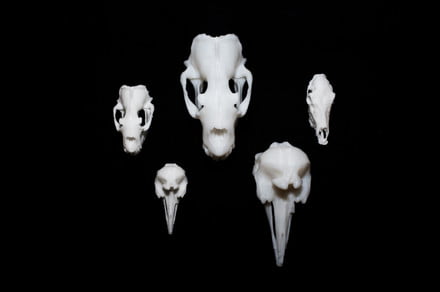The internet is a Wunderkammer, a cabinet of curiosities where you can explore ocean depths, ancient artifacts, and outer space with the click of a button. There’s also a ton of trash online, sure, but if you know where you look, you can find some real treasures.
And the treasure trove just got a little bigger. Thanks to the California Academy of Sciences, you can access more than 700 scientific specimens and artifacts from its world-class collection via the online 3D and VR platform Sketchfab. The collection runs the gamut — from an assortment of rare bones, to Navajo bracelets and intricate basketry. Each 3D model can be accessed and downloaded for free via the Sketchfab website.
“The Sketchfab collection is so easy to browse and be inspired by that we hope it’ll be widely used by everyone …”
The models were first created in 2014 through a partnership with Google that saw scans taken for about 40 skeleton specimens. The tech giant also made one of its proprietary scanners available to staff members toiling away in the academy’s basement for the Institute for Biodiversity Science and Sustainability (IBSS). Over the years, IBSS staff members slowly but surely created the collection of 3D scans, which now includes more than 900 specimens.
“Once we realized what we had — this incredible resource of hundreds and hundreds of stunning models that could be rotated, zoomed through, and studied in-depth from anywhere in the world — there was no question,” Laurel Allen, a community manager for the Academy, told Digital Trends. “We had to make them accessible to the public. Unlike our full collections databases — which are also available online, but require users to know what they’re looking for — the Sketchfab collection is so easy to browse and be inspired by that we hope it’ll be widely used by everyone from scientists and researchers to teachers, students, artists, and anyone dazzled by the natural world.”
The models are classified and categorized into 11 separate collections to make them easier to search and explore. Tens of millions more scientific specimens have yet to be scanned in the Academy’s basement.
“There’s a critical need to increase accessibility to the hundreds of millions of natural history specimens that document life on Earth through time and space,” Christina Piotrowski, manager of the Academy’s invertebrate collection, said. “While museum collections are currently accessed by researchers to answer important scientific questions, we can bring the world’s museum specimens off the shelves, using technology like this to increase global accessibility and create irreplaceable snapshots of our ever-changing natural world.”
Editors’ Recommendations
- With artificial bone marrow, scientists aim to decode blood disease
- Mammoth undertaking: Company to 3D print a full-size skeleton of elephant ancestor
- 15 major milestones along the brief history of 3D printing
- Live updates: How to watch Apple’s WWDC 2018 keynote
- The 25 best Nintendo 3DS games

